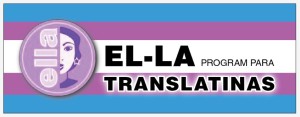Immigration is particularly important to the trans community in the way that those of trans identity try to migrate to other countries in search of tolerance and acceptance. However, in certain cases, some trans immigrants find themselves exiles of their homelands, or “sexiles”, due to the intolerance and rejection of friends, family, and society in their countries of origin.
The term “sexile” refers to those of trans identity who immigrate to the U.S. in search of tolerance, acceptance, and freedom from prosecution who become “exiled” from their homelands, culture, and families due to how they identify sexually. Seen by Jaime Cortez (author of “Sexile”) first as a title to the essay by Pedro Bustos, “sexile” is a term used “to describe the state of people who had been cast out from the prickly bosom of their birth cultures and families. Sexile the word is full of longing, awareness, invention, and displacement” (Cortez 5). In Cortez’ graphic novel, “Sexile”, Cortez illustrates the immigration and gender exploration of Adela Vázquez, a trans woman immigrant from Cuba in 1980. For Adela and many others like her, being a “sexile” meant being forced (whether literally forced or being made to feel as if they were unable to stay) out of their homelands into another country, such as the U.S., and being unable to return to their homeland, their family, and their friends all because of how they identify sexually. “Exile is a bitch, baby. You can’t completely leave home. You’re always still arriving home” (Cortez 50). In immigrating to the U.S., Adela was able to find a place of tolerance and acceptance regarding her sexual identity, and was able to become her “true self” as a trans woman, by accepting that while she may be unable to “find the shore”, that “All the in-between places are my home. This beautiful freak body is home. And every day I love it…” (Cortez 64).
While some trans immigrants to the U.S. are able to find such acceptance and freedom in the U.S. as Adela, unfortunately, some are not as fortunate and placed in detention centers where they face further prosecution and violence. “Why were asylum seekers- people fleeing persecution in their homelands for freedom in the United States- locked up in detention centers? Why is rape so easy to commit in such a place and, on the rare occasion when it is prosecuted, so easily reduced to misdemeanor charges?” (Solomon 4). In this way, even the U.S. has proved that while society may be more accepting of those of those of trans identity, the U.S. Immigration system is not so willing to accept trans immigrants. To further worsen trans immigrants’ experience, trans identifying individuals are not able to be placed with binary sexual identifying individuals (ex. a man that identifies as a women is not able to be placed with other men as it make the trans woman an even more vulnerable than they already are), and are placed in solitary confinement for 23 hours a day without the privileges of a normal detainee (i.e. no right to an attorney, no right to medical care, etc.).
The term “immigrant” is significant to the trans community in the way that it refers to the thousands of trans immigrants who try to find acceptance and tolerance that they can’t find in their homeland countries in the U.S. While some immigrants migrate and find acceptance, some only find more violence and discrimination. Some trans immigrants become what has been defined as a “sexile”, an exile of their homeland, friends, and/or family because of their sexual identity. Trans immigrants who flee their homeland seeking asylum (safety from discrimination and violence against them for being someone who identifies as trans) and then face discrimination and violence by the U.S. Immigration system is perhaps the biggest sign of proof that something has to be done about the U.S. Immigration system and the discrimination of those considered different from the “norm”.
